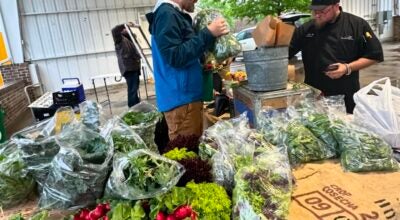Summer food safety: tips for parents and children
Published 6:00 am Sunday, May 14, 2017
By Patty Hudek
Lafayette County Extension Service
Are you planning a summer picnic or get together outside? Taking advantage of warmer temperatures and the great outdoors can encourage more physical activity after mealtime; however, it also provides the perfect environment for bacteria and other pathogens in food to multiply rapidly and cause foodborne illness.
Nothing puts the brakes on having a great summer vacation quite like coming down with a case of food poisoning- or needing to take care of a family member who has! Therefore, summer is the perfect time to review the basic steps to food safety.
Follow the suggestions below to prevent food-borne illness, and discuss these concepts with your children. This is especially important if they are preparing their own meals or snacks to eat.
• Wash hands thoroughly: Before handling any food, make sure you wash your hands with soap and warm water for at least 20 seconds. Repeat this after you are done handling food, and any time you touch raw meat.
• Beware of the “danger zone:” The “danger zone” in food safety is the temperature range between 40 degrees and 140 degrees. In this range, bacteria rapidly multiply and can reach unsafe levels after two hours, or one hour if the temperature is at or above 90 degrees. If you have leftovers that haven’t been eaten or refrigerated within two hours after being served (or one hour if at or above 90 degrees, the food should be discarded.
• Keep cold foods cold, and keep hot foods hot: Keep cold perishable foods at or below 40 degrees until you are ready to cook or serve. If you are away from home, use a cooler filled with ice or ice packs to keep perishable foods at a safe temperature. After cooking, make sure to keep hot foods at least 140 degrees until they are ready to be served. Put perishable food items back in the refrigerator or cooler once you are done using them.
• Cook to correct internal temperatures: Use a food thermometer to determine whether meats are done cooking — do not rely on color alone! The following are safe minimum internal temperatures: beef, pork, veal, lamb, fish (steaks, chops, roasts), 145 degrees; ground meats, 160 degrees; poultry, 165 degrees.
• Keep raw meats separate: Be careful when transporting and storing raw meats, ensuring that juices from the raw meat do not come into contact with fruits, vegetables, and other ready-to-eat foods. Put raw meat into plastic bags, and keep it separate from other foods.
• Wash fruits and vegetables: Before cutting or peeling, make sure that you rinse all produce with water.
Patty Hudek is an extension agent at the Lafayette County’s Extension Service on Veterans Drive. You can reach her at p.hudek@msstate.edu.





